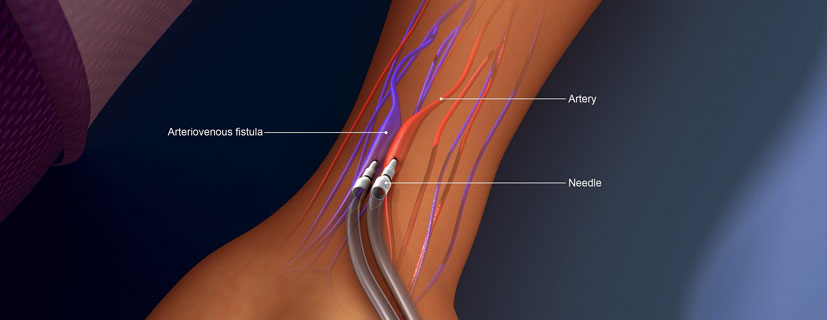Book Appoinment
AV Fistula Surgery


AV fistula surgery, also known as arteriovenous fistula creation, is a surgical procedure performed to create a connection between an artery and a vein. This type of vascular access is commonly used in patients with end-stage renal disease (ESRD) who require hemodialysis for kidney function replacement. The AV fistula allows for repeated access to the bloodstream for hemodialysis treatments.
Here is an overview of the AV fistula surgery process:
- Preoperative Evaluation: Before the surgery, the patient undergoes a thorough evaluation, which may include blood tests, vascular imaging studies (such as ultrasound or angiography), and assessment of the patient's general health. The surgeon identifies a suitable artery and vein for fistula creation.
- Anesthesia: AV fistula surgery is typically performed under local anesthesia, which numbs the surgical area, or regional anesthesia, where the patient is sedated or anesthetized to block sensation in the entire arm.
- Fistula Creation: The surgeon makes an incision near the selected artery and vein. The chosen artery is carefully connected to the vein, creating a direct connection between them. This connection allows arterial blood, which has higher pressure, to flow into the vein, increasing its size and flow rate. This enlarged vein is known as a fistula.
- Incision Closure: After creating the AV fistula, the surgeon sutures the incision in the skin and may place a small dressing or bandage over the surgical site.
- Postoperative Care: Following the surgery, the patient is monitored in a recovery area for a short period. The arm with the newly created fistula is observed for signs of adequate blood flow, such as a strong pulse and appropriate coloration. The patient is provided with instructions for postoperative care, including wound care, arm exercises, and restrictions on heavy lifting or pressure on the fistula site.
- Maturation and Use: The AV fistula requires time to mature before it can be used for hemodialysis. This maturation period typically takes several weeks to a few months. During this time, the vein gradually enlarges, strengthening the connection and making it suitable for repeated needle insertions during hemodialysis sessions.
AV fistulas are the preferred type of vascular access for long-term hemodialysis due to their higher longevity and lower risk of complications compared to other access options such as arteriovenous grafts or central venous catheters. AV fistulas generally offer better blood flow, lower infection rates, and fewer instances of clotting or stenosis.
